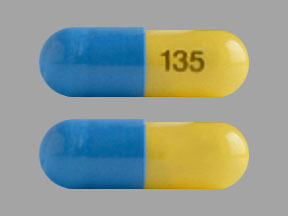
Fenofibric Acid Coupons & Savings Card – Discount Prices from $36.00
Generic for: Fibricor
My prescription
Edit
135MG, Fenofibric Acid (90 Capsule Delayed Releases)
Select pharmacy

CVS
$36.00
COUPON PRICE
Walgreens
$42.21
COUPON PRICE
Walmart
$48.56
COUPON PRICE
Albertsons
$56.77
COUPON PRICEFenofibric Acid savings card
Show this card to your pharmacist
CVS
$36.00
BIN
ID
PCN
GRP
019876
LH6E00D61D
CHIPPO
LHX
Powered by
More prescriptions for high triglycerides
More prescriptions for high triglycerides
Price history for Fibricor (brand) & Fenofibric Acid (generic)
90 Capsule Delayed Releases, 135MG
Average retail price for Fibricor
Average retail price for Fenofibric Acid
Average SaveHealth price for Fenofibric Acid
Our price history data is based on aggregated prescription data collected from participating pharmacies in America. Our prescription data updates daily to reflect the latest price changes. If you notice a missing data point, it means there wasn't sufficient data available to generate a monetary value for that date.
We analyzed Fenofibric Acid prices for (135MG, 90 Capsule Delayed Releases) over the last 12 months. The average retail price was $81.86, while the average price using the SaveHealth discount card was $32.89. That's a savings of approximately 59.82% when using our Fenofibric Acid coupon.
Compared to the generic version, Fibricor had an average price of $591.99 over the same time period. With the SaveHealth savings card, Fenofibric Acid is 94.44% cheaper on average than Fibricor.
*Retail prices are based on pharmacy claims data, and may not be accurate when we don't have enough claims.
Fenofibric Acid dosage forms
Dosage Quantity Price from Per unit 45MG 90 Capsule Delayed Releases $24.55 $0.27 135MG 90 Capsule Delayed Releases $36.00 $0.40
| Dosage | Quantity | Price from | Per unit |
|---|---|---|---|
| 45MG | 90 Capsule Delayed Releases | $24.55 | $0.27 |
| 135MG | 90 Capsule Delayed Releases | $36.00 | $0.40 |
Fenofibric Acid Warnings
The safety of fenofibrate is of utmost importance, and it is essential to understand the potential risks, precautions, and steps to take in case of adverse reactions. Please review the following information and consult your healthcare provider if you have any questions or concerns:
Liver Damage: Fenofibrate may cause severe liver damage, potentially leading to liver failure or even death. This risk can occur at any time during treatment and may resolve upon discontinuation. Regular blood tests are necessary to monitor liver health. Discontinue use and seek immediate medical attention if you experience symptoms such as abdominal swelling, pain, nausea, vomiting, jaundice, changes in stool color, or confusion. Avoid use if you have existing liver issues. Higher doses increase the risk.
Muscle Damage: This medication may increase the risk of muscle injury, including severe breakdown (rhabdomyolysis), which can affect other organs. The risk is heightened if used with other muscle-affecting drugs like statins or in individuals with specific conditions such as diabetes. Notify your healthcare provider about all medications you are taking. Seek help if you experience fever, sudden muscle pain, cramps, weakness, or dark urine. Risks are higher for older adults, those with kidney failure, diabetes, low thyroid hormones, or on other muscle-damaging drugs.
Kidney Effects: Some patients might show elevated creatinine levels, suggesting potential kidney issues. The exact impact on kidneys is unclear, but monitoring through blood tests is recommended. Start with a lower dose if you are 65 or older, have diabetes, or kidney problems. Report any changes in urination or urine color to your provider.
Allergic Reactions: Possible life-threatening allergic reactions include swelling of the mouth or face and anaphylaxis. Discontinue use and seek emergency medical attention if you experience hives, swelling of lips or tongue, or breathing difficulties.
Gallstones: Fenofibrate may increase the risk of gallstones. Do not use if you have gallbladder issues. Alert your provider if you experience stomach or back pain, nausea, or vomiting for gallstone evaluation.
Pancreatitis: Rare cases of pancreatitis have been reported. Causes may include high triglyceride levels or the medication itself. Contact your provider if you experience sudden abdominal pain, nausea, vomiting, or fluid buildup.
Blood Clots: There is a potential risk for blood clots in the lungs (pulmonary embolism) or legs (deep vein thrombosis). Seek immediate medical assistance if you have chest pain, breathing difficulties, leg swelling, or tender, warm skin.
It is critical to avoid fenofibrate if you have severe kidney disease or are on dialysis, have liver or gallbladder diseases, or are a nursing mother. Always consult your healthcare provider if any of these conditions apply to you before starting this medication.
Fenofibric Acid Side Effects
Common side effects:
- back pain
- headaches
- stuffy nose
- nausea
- constipation
- rashes
Serious side effects:
- significant liver damage
- severe muscle issues (rhabdomyolysis)
- severe drop in HDL cholesterol
- blood clots
- infections
- very serious allergic reaction
Fenofibric Acid Interactions
Interactions with high risk of serious adverse effects and should be avoided:
- Ciprofibrate
Interactions with moderate risk that may require dose adjustment, closer monitoring, or timing changes:
- Acenocoumarol
- Anisindione
- Atorvastatin
- Colchicine
- Dicumarol
- Fluvastatin
- Lovastatin
- Phenprocoumon
- Pitavastatin
- Pravastatin
- Rosuvastatin
- Simvastatin
- Warfarin
Interactions with low risk that usually do not require a change in therapy:
- Colestipol
- Cyclosporine
- Ezetimibe
- Rosiglitazone
